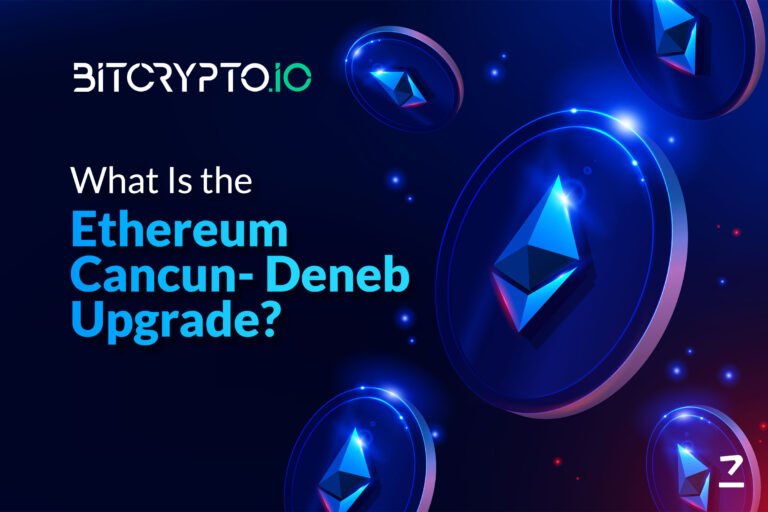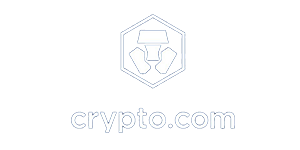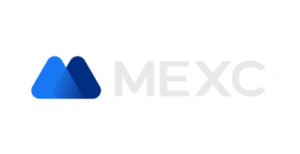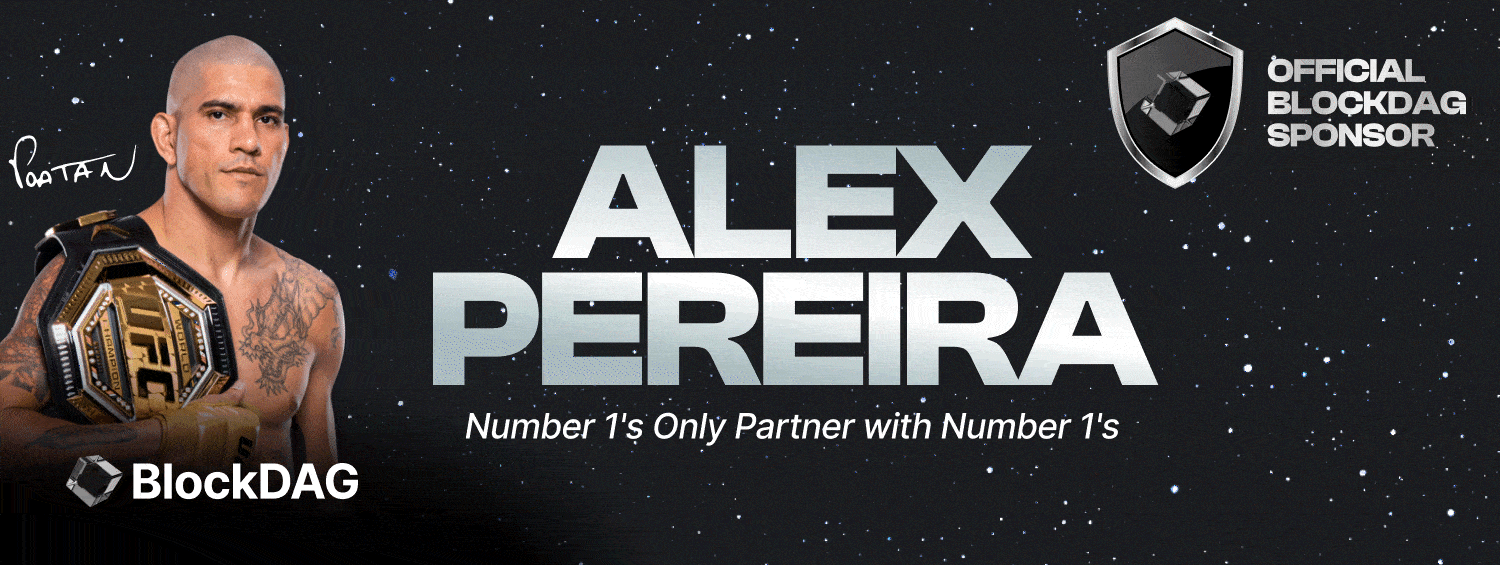Key Takeaways
- The Ethereum Cancun upgrade aims to enhance scalability, security, and efficiency within the Ethereum network, introducing the concept of proto-danksharding.
- Danksharding represents the final phase of the Ethereum 2.0 (Serenity) upgrade that enhances data management and transaction processing.
- The Ethereum Cancun upgrade is designed to bring faster transaction processing times, reduced transaction costs, and optimized data management. Potential risks include impacts on existing smart contracts and the integration of new data storage techniques.
- The Ethereum Cancun upgrade was initially planned to go live in October 2023 but was later delayed to the first half of 2024. It went live on the Ethereum mainnet on March 13, 2024.
Introduction
Ethereum’s transition to Proof of Stake (PoS) and the introduction of sharding are vital components of its Ethereum 2.0 upgrade. PoS reduces energy consumption by replacing miners with validators, who are selected to create new blocks based on the amount of ETH they stake.
Meanwhile, sharding increases transaction speed by partitioning the Ethereum network into smaller pieces (shards), with each capable of independently processing transactions and smart contracts. The shift from PoW to PoS enables secure and efficient sharding by randomly assigning validators to specific shards, preventing manipulation and enhancing performance.
The Ethereum Cancun upgrade represents an important advancement in the Ethereum blockchain, aimed at fortifying the network’s scalability, security, and overall efficiency. This upgrade introduces the concept of proto-danksharding, an important step toward optimizing data management and enhancing transaction affordability within the Ethereum ecosystem.
By leveraging innovative data storage techniques, the Ethereum Cancun upgrade is poised to revolutionize the way the network processes transactions, paving the way for a more accessible and seamless user experience.
Understanding the Ethereum Cancun Upgrade
The Ethereum Cancun upgrade (also known as the “Cancun-Deneb” upgrade) is a concerted effort by Ethereum to bolster its infrastructure and address unresolved issues after the Shanghai upgrade.
The Cancun upgrade is based on four Ethereum Improvement Proposals (EIPs): EIP-4844, EIP-1153, EIP-4788, and EIP-6780. Together, the implementation of these EIPs can provide many benefits, including improved scalability, enhanced data storage and availability, and reduced transaction costs.
With a primary focus on optimizing the execution layer (Layer 1), the Cancun upgrade prepares the network for the future implementation of full data sharding, a vital component in Ethereum’s long-term development strategy.
Sharding refers to splitting a blockchain database into smaller portions, called shards, for higher efficiency, and the Cancun upgrade introduces a specific type of sharding known as proto-danksharding (discussed below).
The goal of the Cancun upgrade is to increase the network’s transactions per second (TPS), aligning with Ethereum’s roadmap’s “Surge” phase, aiming to scale performance to 100,000+ TPS.
The Cancun upgrade – along with the subsequent Deneb upgrade – represents a significant milestone in Ethereum’s journey towards establishing itself as a leading decentralized finance platform.
Danksharding and Proto-Danksharding
Danksharding and proto-danksharding are different iterations of the sharding technology developed for Ethereum. Named after Ethereum researcher Dankrad Feist, danksharding is a type of sharding that serves as the final phase of the Ethereum 2.0 (Serenity) upgrade. It concentrates on optimizing data availability for rollups within the Ethereum network.
Technically speaking, danksharding is a design that introduces the concept of a merged market fee. While traditional sharding has different blocks and block proposers for each shard, there is only one block proposer in danksharding. In simple terms, danksharding can enhance transaction processing and streamline data storage by simplifying the sharding architecture and prioritizing data management.
In the context of the upgrade, proto-danksharding (introduced by EIP-4844) serves as a prototype of danksharding. It’s a temporary solution that can significantly reduce gas fees associated with rollups before the complete implementation of the danksharding framework.
Blob-carrying transactions
Blob-carrying transactions were introduced along with proto-danksharding (EIP-4844) to help reduce gas fees. Blob-carrying transactions allow the temporary storage and retrieval of off-chain data, meaning extra data can be added to Ethereum transactions in a more cost-effective way.
Benefits of the Ethereum Cancun Upgrade
As we’ve discussed, the Ethereum Cancun upgrade can provide a range of benefits, including faster transaction processing, reduced transaction costs, optimized data management, and improved cross-chain communication. By introducing the concept of blob-carrying transactions, the upgrade aims to streamline data processing and enhance overall network efficiency.
1. Better scalability: Proto-danksharding introduces temporary data storage capacity, allowing Layer 2 rollups (and the network as a whole) to process more transactions per second.
2. Reduced transaction costs: Blob-carrying transactions allow extra data to be added to Ethereum transactions in a more cost-effective way.
3. Optimized data management: EIP-1153 can optimize block space and reduce on-chain data storage costs.
4. Better cross-chain communication: EIP-4788 aims to improve interoperability between different blockchain networks by exposing the Beacon chain to execution layers.
5. Improved security: EIP-6780 can reduce the risk of smart contract termination by disempowering the SELFDESTRUCT code, enhancing the security of user data and funds.
Potential Risks of the Ethereum Cancun Upgrade
There might be risks related to the potential impact of the upgrade on existing smart contracts and the intricacies of integrating new data storage techniques. These require extensive testing and careful consideration during the implementation phase to ensure a smooth transition for all stakeholders involved.
Ethereum Cancun Launch Date
The Ethereum Cancun-Deneb upgrade was initially planned to go live in October 2023 but was later delayed to the first half of 2024. It went live on the Ethereum mainnet on March 13, 2024 (at epoch 269,568). Node operators and stakers must upgrade their software to releases listed in the official announcement.
Closing Thoughts
The Ethereum Cancun-Deneb (Dencun) upgrade marks a significant leap forward in Ethereum’s quest for improved scalability, efficiency, and user experience. By introducing proto-danksharding and laying the groundwork for future advancements, the Ethereum Cancun Upgrade will likely enhance the realm of decentralized finance and blockchain technology.


























